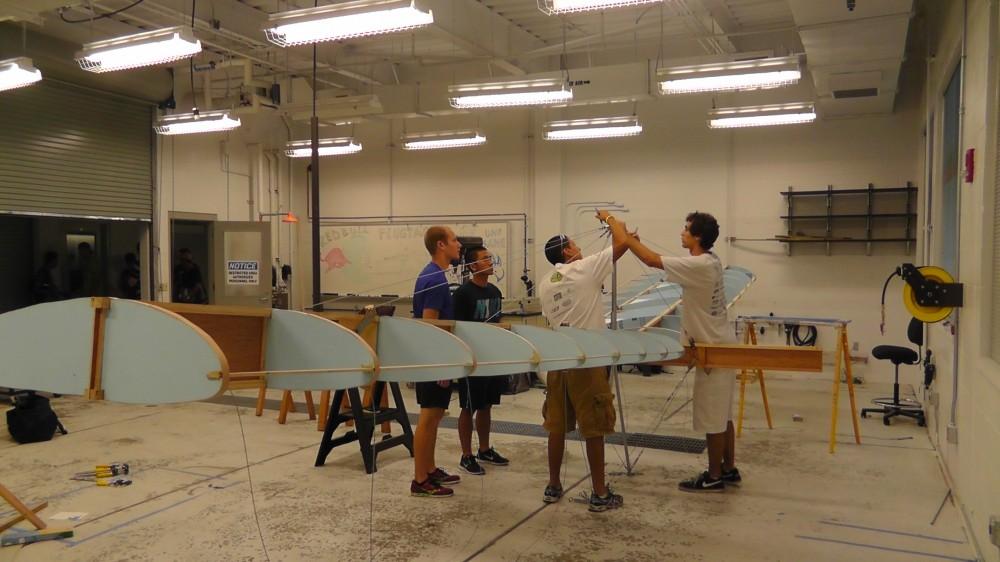
Photo by Dargan Thompson
This weekend, a group of engineering students will take the machine they spent a month building and push it off a pier, hoping it will fly far before it crashes into the ocean.
As crazy at that sounds, UNF’s chapter of the Society of American Military Engineers (S.A.M.E.) will be one of thirty teams doing the same thing Nov. 3 at the Red Bull Flugtag competition in Miami.
Red Bull Flugtag is a competition where teams build human-powered gliders and push them off a 30-foot deck to see how far they fly. The machines have to be built from scratch and can’t have any moving parts, with a maximum wingspan of 30 ft. and weight of 450 lbs.
A team consists of a pilot, who has to sit somewhere on the machine, and four people to help with the push-off. Teams are given a one minute slot to perform a skit and then fly their machine off the deck. They are judged on flight distance as well as creativity and showmanship.
The president of UNF S.A.M.E. and civil engineering senior, Jason Quijano, said the group’s machine is a simple, wooden glider they are painting to look like an osprey. With a wingspan of 28.5 ft., the glider is designed to be taken apart and reassembled to simplify the transportation process.
Though eight people helped work on the machine, seven are going down to Miami, and only five will be able to actively participate in the competition.
For their skit, the team plans to dress up like ospreys and dance around an egg that will hold their pilot who will then pop out and get on the glider to fly off the deck.
Quijano said members of S.A.M.E. decided to do Flugtag because they wanted to get involved in some sort of competition to distinguish the group.
Chris Brown, the faculty advisor for S.A.M.E., said when the group came to him about the competition, he thought it was a good opportunity. He said their design is very sophisticated and they exceeded his expectations with what they were able to do in one month.
Team member Gabriel Todaro said the group limited their time to design and build their machine because of how late they signed up. He said two or three months would have been a more realistic time frame to draw out designs, consider alternatives and do test runs.
“This is sort of a last minute thing, so we don’t really have a lot of room for error,” Todaro said.
Todaro said, overall, he’s looking forward to being in Miami and mingling with other teams at the competition. He hopes the group’s machine will at least make it in the top five for distance.
After the competition, the team is not guaranteed to get its glider back. Quijano said the water will probably wreck the wings and the people running the competition drag away the gliders after they land in the water in order to make space for the next competitors.
After working on the machine for several hours a day for the past month, Quijano said he’s looking forward to the trip and seeing the outcome of the team’s hard work.
He said he’s a little nervous to be in front of a large crowd, though. Over 100,000 spectators showed up to watch last year’s competition in Tampa.
“I’ve never been in front of a huge crowd like that, but I’m hoping, seeing everyone else, it should be just fine,” he said.
Email Dargan Thompson at features@unfspinnaker.com







